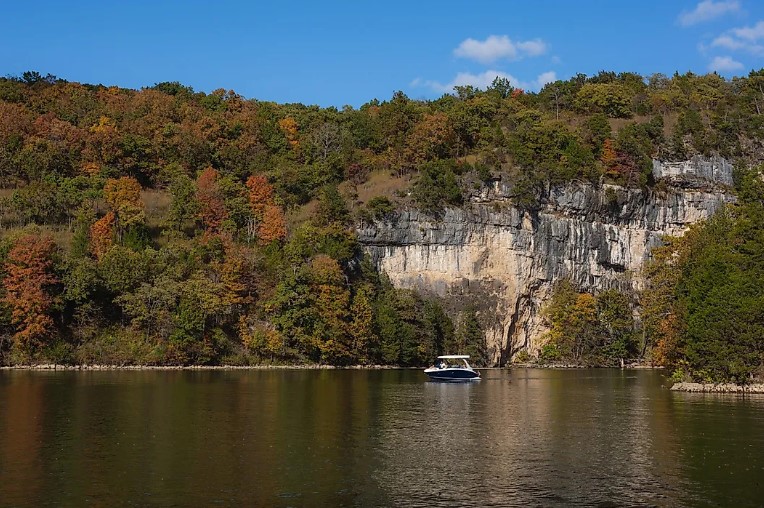MPCA report: Aquatic ecosystems improving locally, statewide – southernminn.com

Report on Water Quality and Sustainable Development in Minnesota’s Cannon River Watershed
1.0 Introduction
An assessment of water quality within Minnesota’s Cannon River Watershed reveals significant progress in ecosystem health over a ten-year period. The maintenance and improvement of these water bodies are critical not only to the regional lifestyle and recreational activities but also align directly with several key United Nations Sustainable Development Goals (SDGs). This report outlines the status of the watershed and analyzes its contributions to achieving global sustainability targets, particularly those concerning clean water, biodiversity, and community well-being.
2.0 Geographic Scope and Ecological Significance
The Cannon River Watershed is a vital freshwater system in southern Minnesota, encompassing a 1,460-square-mile area. Its health is fundamental to the environmental and economic stability of the region.
- Primary Waterways: The watershed is comprised of the Cannon River and the Straight River, along with numerous other tributary rivers and streams.
- Jurisdictional Area: It extends across portions of six counties, including:
- Dakota
- Goodhue
- Le Sueur
- Rice
- Steele
- Waseca
The integrity of this watershed is a cornerstone for achieving SDG 15 (Life on Land), by protecting and restoring freshwater ecosystems and their services.
3.0 Analysis of Water Quality and Biodiversity Improvements
According to monitoring data from the Minnesota Pollution Control Agency (MPCA), the Cannon River Watershed has demonstrated marked ecological improvements over the last decade. The primary indicator of this positive trend is the enhanced health of local fauna.
- Improved Aquatic Communities: There has been a notable recovery and improvement in both fish and insect populations within the watershed.
- Indicator of Ecosystem Health: The flourishing of these communities serves as a key metric for reduced pollution and improved water quality, directly supporting the objectives of SDG 14 (Life Below Water), which calls for the conservation and sustainable use of aquatic resources.
4.0 Alignment with Sustainable Development Goals (SDGs)
The efforts to preserve and enhance the Cannon River Watershed contribute significantly to the 2030 Agenda for Sustainable Development. The observed improvements are tangible progress toward the following goals:
- SDG 6: Clean Water and Sanitation: The core mission to maintain clean water in Minnesota’s lakes and rivers directly addresses the targets of SDG 6, ensuring the availability and sustainable management of water for all. Clean water is essential for both ecosystem survival and human use.
- SDG 14: Life Below Water: The documented improvement in fish and insect life is a direct outcome aligned with SDG 14’s aim to protect marine and freshwater ecosystems and halt biodiversity loss.
- SDG 3: Good Health and Well-being: By providing clean water for recreation, the watershed contributes to the physical and mental well-being of Minnesotans, a key component of SDG 3.
- SDG 11: Sustainable Cities and Communities: Access to clean, natural spaces like the Cannon River Watershed enhances the quality of life in surrounding communities, making them more sustainable and resilient.
Sustainable Development Goals (SDGs) Addressed
-
SDG 6: Clean Water and Sanitation
The article’s central theme is “keeping the water clean” in Minnesota’s lakes and rivers, which directly aligns with the goal of ensuring the availability and sustainable management of water. The focus on the Cannon River Watershed highlights efforts to manage and protect water resources.
-
SDG 15: Life on Land
This goal is relevant as it includes the protection, restoration, and sustainable use of inland freshwater ecosystems. The article’s mention of ensuring “a future for aquatic life” and the documented improvement in “fish and insect communities” within the Cannon River Watershed directly relates to the conservation of freshwater biodiversity and habitats.
Specific SDG Targets Identified
-
Target 6.3: Improve water quality by reducing pollution
The article’s statement about the importance of “keeping the water clean” is a direct reference to improving water quality. The positive outcomes mentioned, such as improved biological communities, suggest that efforts related to this target are underway in the region discussed.
-
Target 6.6: Protect and restore water-related ecosystems
The article’s emphasis on ensuring a “future for aquatic life” and the report that “fish and insect communities have improved over 10 years” clearly indicates a focus on the health and restoration of the Cannon River Watershed, which is a water-related ecosystem.
-
Target 15.1: Ensure the conservation, restoration and sustainable use of terrestrial and inland freshwater ecosystems
The entire context of the article, which discusses the Cannon River Watershed, its rivers, and streams, is about managing an inland freshwater ecosystem. The mention of improved aquatic life signifies progress toward the conservation and restoration aspect of this target.
Indicators for Measuring Progress
-
Health of Biological Communities
The article explicitly mentions an indicator used to measure the health of the watershed: the status of “fish and insect communities.” The statement that these communities “have improved over 10 years, according to MPCA water monitoring” shows that the population and diversity of these species are being used as a direct measure of ecosystem health and water quality. This serves as a practical indicator for progress towards Targets 6.6 and 15.1.
Summary Table: SDGs, Targets, and Indicators
| SDGs | Targets | Indicators |
|---|---|---|
| SDG 6: Clean Water and Sanitation | 6.3: Improve water quality by reducing pollution. | The improvement of fish and insect communities, which implies better ambient water quality. |
| SDG 6: Clean Water and Sanitation | 6.6: Protect and restore water-related ecosystems. | The measured improvement in fish and insect communities over a 10-year period. |
| SDG 15: Life on Land | 15.1: Ensure the conservation, restoration and sustainable use of terrestrial and inland freshwater ecosystems. | The health and improvement of aquatic life (fish and insect communities) as a measure of freshwater ecosystem vitality. |
Source: southernminn.com

What is Your Reaction?
 Like
0
Like
0
 Dislike
0
Dislike
0
 Love
0
Love
0
 Funny
0
Funny
0
 Angry
0
Angry
0
 Sad
0
Sad
0
 Wow
0
Wow
0



















































.jpg.webp?itok=0ZsAnae9#)

























